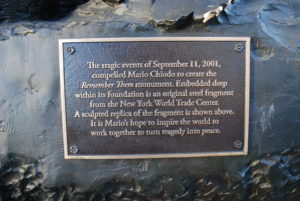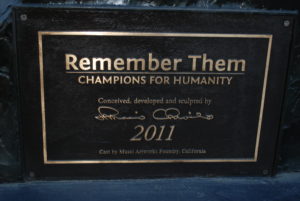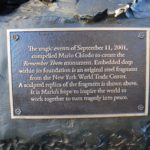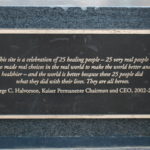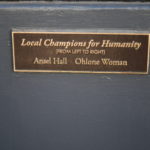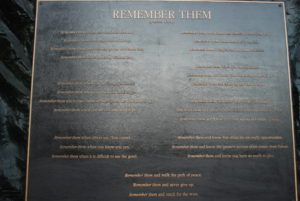I do focus on a goal – the sustainability of the food-energy-water nexus (1) for supporting life on earth. (2)
That is a short sentence representing some very big topics and issues.
- The production and distribution of high quality food requires energy and water and fair policies.
- The production of and distribution of energy also requires water and in the case of biofuel also requires a portion of the crop yield which diverts both water and crops from people who might need it for sustenance.
- The treatment of freshwater for various uses and treatment of wastewater for reuse or for safe return into surface and ground water sources requires energy and includes food and sewage within the wastewater. Some types of salts, other chemicals, and decomposition bacteria are also used. Fresh water needs to be produced and distributed fairly and wastewater transported back for safe treatment and reuse or return to surface or groundwater supplies.
All three areas of production and distribution use energy and all three are needed for sustaining human life on earth. Protecting the environment while producing the food, energy, and treated water in a sustainable manner helps sustain other types of life throughout the ecosystem, from the tiny microbes at the base of the food chain up to predator species at the top of the food chain. All are important for a sustainable and healthy ecosystem. Food, energy, and water are interconnected within industrial systems and societal needs and within our bodies. Life is complex, the goal is simple – sustain life.
What can I or anyone do in their daily life to help sustain life on Earth?
- Use less energy intensive crops and buy food in bulk or with more biodegradable or recyclable forms of food packaging.
- For example – potatoes and sugar beets are less energy intensive to grow than sunflower seeds or wheat. Chickens and pigs, poultry and pork are less energy intensive meats to raise as farm animal products than to raise cows for beef. See Figures 2.3 and 2.4 (3).
- Crops also vary in how water intensive they are to grow, wheat and sunflower seeds require more water than beans, peas, barley, millet, cabbage, tomatoes, potatoes, sugar beets, and melons for example. See Table 5 for seasonal total water needs for a number of crops: (4).
What can local government and industry do? or neighboring countries or states? – work together to devise more efficient use of the available water supplies for energy or food production and plan methods for treating and reusing wastewater from agriculture or urban areas. Urban areas use water and create wastewater within their local area but food and energy is generally produced elsewhere and is transported to the urban location. Currently some progress has been made to treat and recycle wastewater for fertilizer use and to produce some energy (methane is produced during decomposition of food and sewage treatment).
For the sustainable production of crops, within just 40 years, human civilization needs to shift to primarily using recycled fertilizer because there is a dwindling supply of phosphorus available in a form that is bioactive for use as a fertilizer. Recycling wastewater also retains nitrogen and both phosphorus and nitrogen can cause disruption of coastal waters when it enters the water supply within run-off from agricultural or lawn treatments.
Many example case studies from around the world describe ways that communities have worked together to make processes that maximize food and energy production and preserve water by planning the best use of resources for the region. See: Implementation and Case Studies, Nexus – The Water, Energy, and Food Security Platform, (water-energy-food.org).
Some of the ideas I have been working on focus on increasing use of foods or food waste that actually has significant health benefit but which might not seem as appealing as more familiar foods. Reducing food waste directly increases the nutritional value from the energy and water that was used to grow the crop and reduces the amount of food waste that would be entering the waste stream.
Some foods with significant health benefits that are being under-utilized or currently are being thrown away:
- Pomegranate peel is being discarded when it could be helping prevent or treat cancer and inflammatory disease and other conditions. (more about pomegranate peel extract)
- Sassafras leaves were the second largest export from the American colonies in the 1700’s because they have healing benefits and are a natural food thickener and emulsifier when dried and powdered. (more about sassafras leaves/Gumbo File/Choctaw Spice)
- Fennel seeds are used commonly in India as a crunchy snack or similar to an after dinner mint as a digestive aid/breath freshener/dessert. Fennel seed powder is less crunchy but has the health benefits and could be used in baked goods or as a thickener in sauces or soups. (more about Fennel seeds/Fennel powder in baking).
What can we do to sustain life? My answer: Everything we can think of, soon.
Disclaimer: Opinions are my own and the information is provided for educational purposes within the guidelines of fair use. While I am a Registered Dietitian this information is not intended to provide individual health guidance. Please see a health professional for individual health care purposes.
For more information on water management and food-energy-water nexus implementation strategies check to see if another session becomes available of a United Nations free course on developing local water sources to help meet future water needs, Local Water Solutions for Global Challenges, (GaiaEducation.org).
- Leck, Hayley, Conway, Declan, Bradshaw, Michael J. and Rees, Judith. (2015) Tracing the water-energy-food nexus : description, theory and practice. Geography Compass, 9 (8). pp.
445-460. gec3.12222. http://wrap.warwick.ac.uk/79533/1/WRAP_Leck_et_al-2015-Geography_Compass.pdf - Graham Turner, Cathy Alexander, Limits to Growth was right.New research shows we’re nearing collapse. Sept. 1, 2014, The Guardian, https://www.theguardian.com/commentisfree/2014/sep/02/limits-to-growth-was-right-new-research-shows-were-nearing-collapse
- F. Monforti-Ferrario and I. Pinedo Pascua editors & contributors, et al., Energy use in the EU food sector: State of play and opportunities for
improvement, JRC Science and Policy Report, 2015, http://publications.jrc.ec.europa.eu/repository/bitstream/JRC96121/ldna27247enn.pdf - C. Brouwer, M. Heibloem, Chapter 2: Crop Water Needs, from Irrigation Water Management: Irrigation Water Needs, Training Manual Number 3, (1986) FAO.org http://www.fao.org/docrep/s2022e/s2022e02.htm

